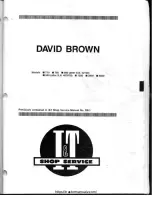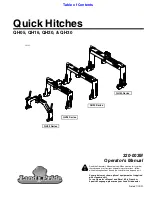
LUBRICATION & PERIODIC MAINTENANCE
77
Checking / Replenishing Coolant
FIG. 6-13:
The radiator is provided with a reserve
tank, 1, to maintain the coolant in the radiator at the
proper level. Check the level in this reserve tank dur-
ing the daily inspection.
Open the hood, and confirm that the coolant in the
reserve tank is between FULL and LOW.
If the coolant level is low, add coolant to the reserve
tank up the FULL level.
FIG. 6-14:
When the coolant level is below the LOW
level, remove the radiator cap, 2, after allowing the
engine to cool sufficiently, and confirm that there is an
adequate amount of coolant in the radiator.
CAUTION: Do not open the radiator cap
except when checking or replacing the
coolant. Make sure to allow the engine to
cool sufficiently before opening the cap. If
the cap is opened while the engine is hot,
coolant may be discharged, resulting in a
burn or other injury.
IMPORTANT: Do not fill the reserve tank higher than
the FULL level. This will prevent the
radiator from functioning optimally,
and may result in leakage of coolant.
Flushing Radiator / Replacing Coolant
FIG. 6-15:
Open the drain cock, 3, at the right side of
the engine to drain coolant. Open the radiator cap, 2,
at the same time to help allow the coolant to drain.
Remove the reserve tank, 1, to drain coolant from it.
Thoroughly flush out the inside of the radiator with tap
water.
Close the drain cock, 3, and pour coolant into the
reserve tank up to the FULL level to fill the radiator.
FIG. 6-16:
Securely close the radiator cap, 2, and re-
serve tank cap, and start the engine, allowing it to run
for about five minutes in the mid speed range (Approx.
1500 rpm). Then stop the engine.
When the engine cools, the coolant in the reserve
tank will be sucked into the radiator.
Add coolant to the reserve tank up to the FULL level.
FIG. 6-13
FIG. 6-14
FIG. 6-15
FIG. 6-16
1
2
3
1
2
Summary of Contents for TH4295
Page 1: ...TH4295 TH4335 TH4365 MODELS I S E K I T R A C T O R S ...
Page 3: ......











































